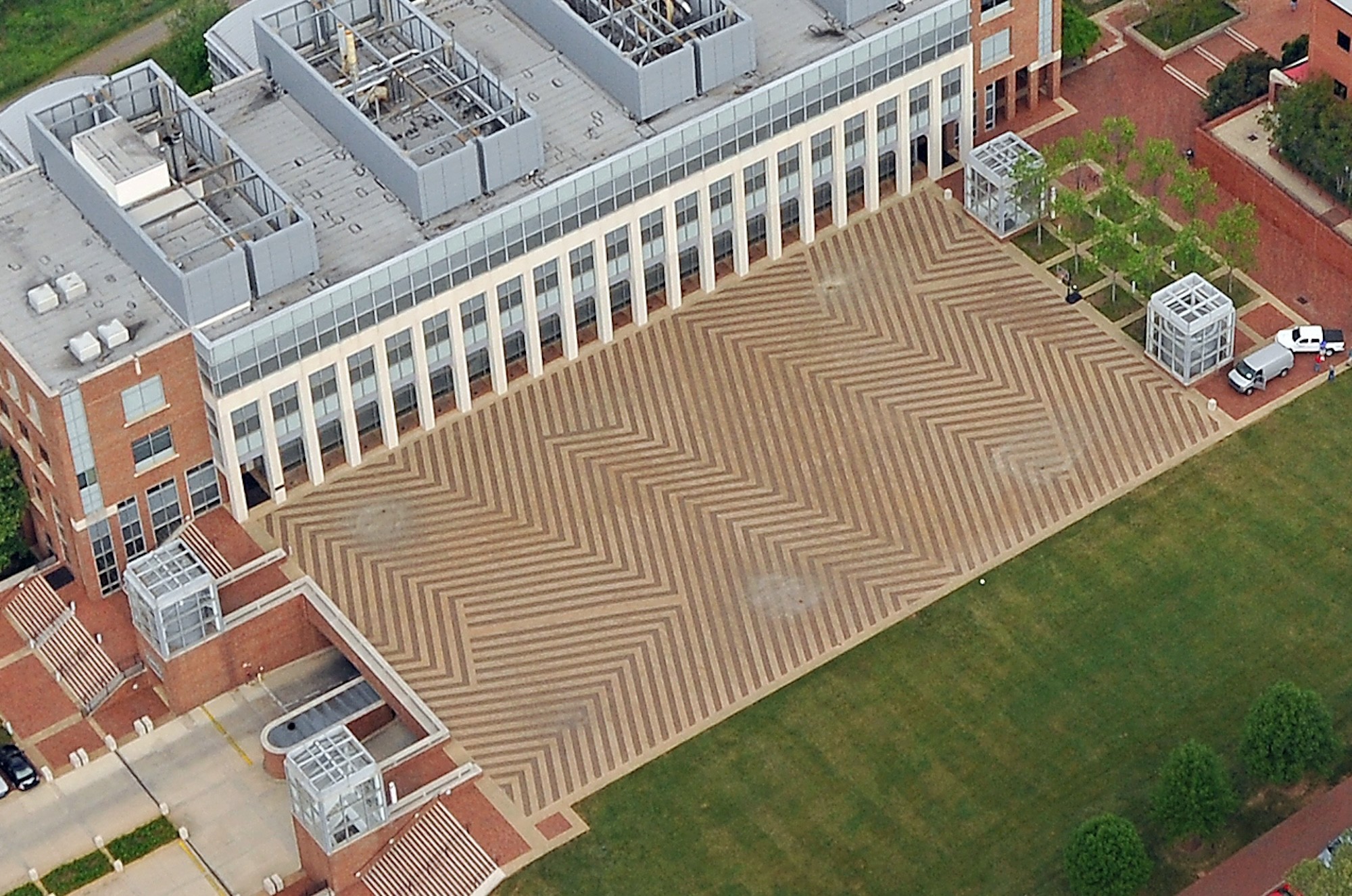
Unearthing Art in Plain Sight: Liquid Order
Discover how a hidden gem on Centennial Campus, conceived as a formal public space, transcends into a unique blend of art and science. Uncover the intriguing story of Liquid Order, a dynamic fusion that has become an integral part of the campus’s fabric.
October 19, 2023 ![]() Charles Hall
Charles Hall
Spread out beneath one of the first buildings on Centennial Campus lies an oft-forgotten public art installation designed with intentionality reflecting research and invention beyond it.
Art meets science in Liquid Order, the plaza adjacent to the Monteith Research Center on NC State’s Centennial Campus. Designed by prolific artist Jun Kaneko, the plaza intends to speak to the power of investigation and research, change and growth, and the complexity found in simple things.
Campus planners conceived the 120-by-200-foot plaza outside MRC as a hard-surfaced formal space that could serve as a place for ceremonies, organized gatherings, and community. Because of this anticipated use, artists were asked to make proposals that would leave the plaza open and not blocked by permanent seating or other objects.
The 108,000-brick plaza would open in March 1997 and has become a part of the everyday environment of research and academia, although its layers of meaning have blended into the environment for all but those who note the small plaque near the building that looms above it.
When asked how people might experience the plaza, Kaneko noted, “Everyone’s experience will be different—something about the taste of food on the tongue… I hope people will just walk around and around on it… I see pathways in the plaza. I see it as an interesting place to walk.”
Engineering is about finding logic and rules out of apparent chaos. But behind that is creative imagination.”
—Jun Kaneko
The story of Liquid Order began in March 1992, four years after the site was selected for the Engineering Graduate Research Center—which would later be renamed in honor of Chancellor Larry Monteith. Kaneko met with engineering faculty, staff, and students to discover the kinds of work that would be taking place in the new building. With his artistic focus on studying the rhythms and patterns in nature, Kaneko developed the plaza’s pattern to reveal essential qualities of order and chaos—pointing to the importance of improvisation, accidents, and the seemingly obvious to research and invention.
“Engineering is about finding logic and rules out of apparent chaos. But behind that is creative imagination,” explained Kaneko. “Accidents are often the foundation for discoveries in research. It is identical to the way an artist works.”
Kaneko, an internationally recognized artist, was born in Nagoya, Japan in 1942, and came to the United States in 1963 to continue his studies at the Chouinard Art Institute. Increasingly drawn to installations that promote civic interaction, he’s realized over seventy public art commissions from 1985 to the present. Many are large-scale permanent installations—like Liquid Order—that can be seen across the United States and internationally in Canada, China, Indonesia, and Japan.
At the time, there was a desire for public art surrounding state buildings—examples of which can be found throughout Raleigh—through a state program that allocated half a percent of a state building’s construction budget to a public art installation, and managed by the North Carolina Arts Council.
